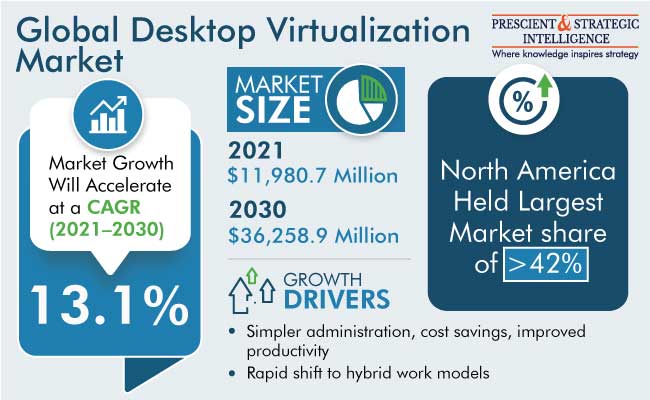How Is Integration of ADAS Boosting Automotive Ethernet Market Growth?
The surging use of advanced driver-assistance systems (ADAS) and smart infotainment systems in automobiles and plunging cost of the ethernet technology are expected to drive the automotive ethernet market at a CAGR of 19.4% during the forecast period (2021–203. Moreover, the soaring investments in the connected car field will aid the market revenue in rising from ~$2 billion in 2020 to ~$10 billion by 2030. In recent years, the increasing adoption of autonomous vehicles and connected features in conventional vehicles has become a prominent market trend.
The rising integration of safety and security systems is one of the key growth drivers for the market. Human errors, such as failure to pay attention, inappropriate speed, and inadequate distance from the vehicle in front, are responsible for most road accidents. To mitigate road accident cases, governments of various countries have issued numerous regulations regarding the integration of safety systems in automobiles. As a result of these regulations, automakers are installing connected safety and security solutions in their offerings, thereby creating a high requirement for internet connectivity.
Another growth driver for the automotive ethernet market is the burgeoning focus on greater passenger conveniences in automobiles. The adoption of advanced solutions, such as connected devices, communication features, and artificial intelligence (AI) technology, is resulting in the development of innovative solutions aimed at enhancing customer satisfaction and improving the driving experience. Moreover, the increasing complexities of the electronic systems of vehicles, owing to the rapid technological advancements, will create a demand for a higher bandwidth. Thus, the escalating need for sensors, interfaces, and controllers will drive the demand for automotive ethernet solutions in the future.
At present, players operating in the automotive ethernet market are improving their existing products and making hefty investments for the development of novel technologies, to gain a competitive edge. For instance, in January 2020, NXP Semiconductors N.V. introduced NXP SJA1110, a multi-gigabit ethernet switch, to help automakers in delivering high-speed networks for connected vehicles, with built-in safety features. This switch offers integrated 100BASE-T1 PHYs, multi-gigabit interfaces, and hardware-assisted security.
The component segment of the automotive ethernet market is categorized into services, hardware, and software. Under this segment, the services category is expected to register the fastest growth throughout the forecast period due to the challenges faced during the integration of ethernet in automobiles. The services category is further classified into training and support, implementation, and consulting. To simplify the complexities arising during the deployment of ethernet, automotive original equipment manufacturers (OEMs) are availing of consulting services.
Globally, the Asia-Pacific (APAC) automotive ethernet market is expected to display the fastest growth during the forecast period due to the rising technological developments, surging number of favorable regulations, and prospering economy of regional countries. Besides, the surging number of automobile manufacturing units in APAC will facilitate the market growth. Moreover, the burgeoning demand for automobiles in India and China, owing to the growing population and its mounting disposable income, will augment the demand for automotive ethernet solutions in the region in the forecast years.
Thus, the booming demand for ADAS and connected features will fuel the market growth in the years to come.
Read More: https://www.psmarketresearch.c....om/market-analysis/a



Why North America Holds Largest Share in Desktop Virtualization Market
Client/server architecture is the standard foundation for desktop virtualization, in which the organization's preferred operating system and applications operate on a server housed either in a data center or in the cloud. This architecture is reminiscent of the so-called "dumb" terminals that were common on mainframes and early Unix systems, where all user interactions take place on a local device of the user's choosing.
Moreover, in comparison to traditional desktop computers, it has several benefits, including easier administration, lower costs, more productivity, support for a wide range of kinds of devices, agility and scalability, stronger security, and better operator experiences. The desktop virtualization market is on the track to hit $36,258.9 million by 2030, growing at a 13.1% CAGR from 2021 to 2030.
The cloud-based category held a larger market share in terms of revenue generation, in the year 2021. Through the internet, cloud-based computing provides access to software that is using shared resources including processing power, disc storage, and memory. These computer resources are maintained by remote data centers, which were designed specifically to host programs on various platforms.
North America holds the largest share in the global desktop virtualization market. This is mostly credited to the region's advanced IT infrastructure, which was made possible by significant IT investment, adoption of 5G technology, and early adoption of cloud-based technologies. This technology is widely used at universities, colleges, and K–12 district schools, which explains why there is a high requirement for virtual desktop software in this area than elsewhere.
Types of Desktop Virtualization
In the desktop virtualization market, the three most common types of desktop virtualization: Remote desktop services (RDS), Desktop-as-a-Service (DaaS), and Virtual desktop infrastructure (VDI).
• By giving service providers the role and responsibility for desktop virtualization, DaaS significantly decreases the strain on the IT department. The predictable monthly prices that DaaS providers build their business model on will be appreciated by organizations that desire to convert IT spending from capital expenses to operational expenses.
• The growing need for secure virtual desktops when working remotely, especially now that the epidemic has prompted companies to adopt hybrid work practices. This is why, DaaS generated about 25.0% of the desktop virtualization market revenue in past, and it will grow CAGR of 13.5% during the forecast period.
• VDI replicates the well-known desktop computing concept and operates on VMs in either an on-premises data center or the cloud. Adopting this strategy allows businesses to administer the desktop virtualization server just like any other on-premises application server.
• RDS is frequently used in place of a full Windows or Linux desktop when only a small number of applications need to be virtualized. Applications are broadcast to the local device, which has its own OS, in this manner. Because only applications are virtualized, RDS systems may provide a greater user density per VM.
Several big companies in the desktop virtualization software market are continuously busy with innovations of products and enhancing their customer base and position. These companies are Parallels International GmbH, Amazon Web Services, Citrix systems Inc., Microsoft Corporation, Nutanix Inc., Huawei Technologies Co. Ltd., Cisco Systems Inc., Oracle Corporation, International Business Machines Corporation, and VMware Inc.
Read More: https://www.psmarketresearch.c....om/market-analysis/d
What All Integrated Passive Devices Can Do for You?
Integrated passive devices don’t have the potential to produce energy, but they can be used for the purpose of storing and dispersing it. These are the key components, put to use in resistors, inductors, capacitors and transformers needed for building any electrical circuit.
These devices do not offer gain, intensification or directivity to a circuit but provide reduction as they continuously gain less than one, unity. Consequently, these can’t produce, waver or intensify an electrical signal.
These can be used separately or together within a circuit, either in a series or in a combination for controlling complex circuits or signals, generate a phase shift for the signal or to offer some feedback but they don’t have the ability to multiply a signal by more than one since they have no power gain.
Passive devices are bi-directional apparatuses, i.e., they can be connected in both ways around a circuit unless they have a precise polarity marking for instance electrolytic capacitors. The split of the voltage across them is regulated by the conformist flow of the current from the negative or positive terminal.
These are usually termed as electrical elements so, in this blog, there will be info about three of the most basic passive electrical elements, resistance, capacitance and inductance.
Resistor as Passive Device
The resistor is a passive constituent opposing the flow of electric current. The amount of the current flow opposition is termed as the resistance of the resistor and is signified by the “R “. Resistance is a degree of how effortlessly or with difficulty, electrons can flow through a specific path in an electrical circuit and, it is expressed in Ohms.
Inductor as Passive Device
Inductance is denoted by “L”, and is the element put to use for energy storage as an electromagnetic field. This kind of energy is stowed in the coil turns provided that a time altering current, the flow continues through the inductor.
Self-inductance is a property of an inductor opposing any alterations in the current as defined by the constant of proportion with the voltage produced in the coil being relative to the rate of change of current flowing through it, with regards to time.
Capacitor as Passive Device
The final device is capacitor. It is different from the inductor, storing its energy magnetically, a capacitor has a potential to store energy as an electrostatic charge across its plates. This device has two or more conducting plates detached by a dielectric material.
Capacitance, which is denoted by “C” is the capacitor property opposing any changes in the voltage as defined by the constant of proportion as the current flowing is relative to the rate of change of voltage across it with regards to time.
It has a lot to do with the increased use of integrated passive devices in consumer devices all over the world, the demand for these devices will continue to rise in the years to come as well.
Read More: https://www.psmarketresearch.c....om/market-analysis/i











